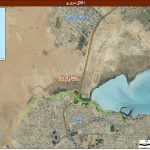The Gulf Cooperation Council (GCC) has recently announced the launch of a groundbreaking regional railway network that is set to transform transportation and economic integration across the Gulf states. The $15 billion project involves 33 stakeholders and aims to start operations by December 2030. This ambitious project will span an impressive 2,217 kilometers, with trains projected to achieve speeds between 200 and 250 km per hour.
The railway’s strategic route will connect Kuwait, Saudi Arabia, Bahrain, Qatar, the United Arab Emirates, and Oman, creating a seamless transportation network across the region. Travel time from Kuwait to Riyadh, spanning approximately 640 kilometers, will be reduced to just 150 minutes, down from the current 6.45 hours by car. Economists see the Gulf Railway as a catalyst for unprecedented economic growth, aiming to achieve a common Gulf market and accelerate economic unity among GCC countries.
The Gulf Railway project is expected to enhance trade exchange and bilateral operations by facilitating the easy and rapid movement of people, goods, and labor between member states. It is anticipated to drive down prices in the region by reducing the costs of transporting goods, food, travel, and labor, leading to improved economic efficiency and enhanced economic power for the Gulf countries. Additionally, it will improve regional communication and reduce transportation times between major cities and ports.
Analysts believe that the project will not only spur economic growth but also attract significant investment to the region, positioning the GCC as an integrated and interconnected economic powerhouse on the global stage. The Gulf Railway is set to contribute significantly to the economic growth, development, and prosperity of the region by diversifying transportation means, reducing transportation costs, enhancing regional trade, and supporting the national industries of GCC countries.
The King Hamad Causeway project will connect the Kingdom of Bahrain with the Kingdom of Saudi Arabia through the construction of a bridge parallel to the King Fahd Causeway. The causeway includes four vehicle lanes and two railway tracks, with a 57-kilometer railway line connecting the King Hamad International Passenger Station with the railway station in the Dammam region of Saudi Arabia. The project aims to enhance economic cooperation between the two kingdoms and is expected to handle about 8 million passengers per year by 2050.
The Bahrain Metro, to be built locally, will connect to the passenger terminal at Bahrain International Airport and vital commercial and residential areas in the Kingdom, enhancing commercial operations and capacity. The King Hamad Causeway project will add greater capacity by creating four vehicle lanes to avoid congestion on the bridge. Overall, the Gulf Railway and King Hamad Causeway projects are set to revolutionize transportation, enhance economic growth, and promote regional connectivity and cooperation across the Gulf states.











